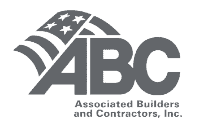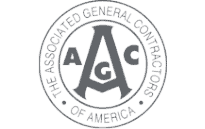
DirectAdvisors Webinar – Prevailing Wage: New Reporting & Record Keeping Obligations
Prevailing Wage: New Reporting & Record Keeping Obligations – New York State has increased compliance for contractors by amending a bill making contractors and subcontractor responsible and accountable to provide additional disclosures to workers on public works jobs.

Amendment to Prevailing Wage Bill Increases Transparency
New York State has increased compliance for contractors by amending a bill making contractors and subcontractors responsible and accountable to provide additional disclosures to workers on public works jobs.

How Supplemental Unemployment Drives Employee Retention
Offering supplemental unemployment benefits (SUB) to your team is one of the best ways to drive employee retention. Providing a steady stream of income to your workers while they’re laid off, on top of the state unemployment benefits they might qualify for, gives them money when they need it most. This fosters a sense of company loyalty and keeps employees committed to you when work temporarily dries up.

Benefits of a Supplemental Unemployment Plan During the Coronavirus Pandemic
Supplemental Unemployment Plans can provide compensation to employees beyond state unemployment insurance during lay off periods. SUB plans can help ease the financial stress of layoffs, generate peace of mind and worker loyalty, and offer significant tax advantages compared to severance pay.

Opportunities For Road and Bridge Contractors
In New York State, many roads and bridges remain structurally-deficient due to years of inadequate funding and climate change. New infrastructure repairs and replacements must accommodate the effects of climate change, spiking project costs by up to seventy-five...

Advantages & Requirements of Using a Trust to Provide Supplemental Unemployment Benefits
Most employers elect to provide Supplemental Unemployment Benefits plans through a trust fund rather than directly through the company. A trust fund that meets the necessary qualification requirements is tax-exempt and, therefore, the contributions made by the...

Essential Requirements of SUB Plan
With some limited exceptions, all SUB plans seeking to meet the qualifications to be exempt from wages (and therefore exempt from FICA and FUTA taxes) must be substantially the same or identical to those described in Rev. Rul. 56-249, as modified by Rev. Rul. 90-72....

Introduction & History of SUB Plans
Introduction Supplemental Unemployment Benefit (SUB) plans provide compensation to employees in addition to state unemployment insurance during periods of layoff. SUB plans, when designed correctly, offer employers a way to provide employees with enhanced income...

Competitive Advantage with Prevailing Wage Bona Fide Benefit Plans
I have previously written on a contractor's potential tax savings when utilizing a bona fide benefit plan to satisfy the requirements of the prevailing wage law. However, there are other ancillary advantages that can provide a competitive advantage for contractors....

How a Contractor Can Save $1,200,000
A contractor can choose between providing the prevailing fringe benefit rate as additional cash wages or as bona fide benefits. The cost of paying the fringe rate as cash wages can be expensive since wages are subject to payroll taxes and payroll-based insurance premiums. In most circumstances, this includes FICA, unemployment taxes, workers compensation premiums, and liability insurance premiums. These costs are typically referred to as “labor burden” and can range between 15%–40% of payroll (depending on rates paid for workers compensation and liability insurance).

Annualization of Fringe Benefits – How to Calculate with Examples
Annualization is one of the most commonly misunderstood concepts in the Davis Bacon Act (DBA), Service Contract Act (SCA) and state laws. However, knowledge about how annualization works, and how it affects contractors’ financial obligations for bona fide benefit...

Funded vs. Unfunded Prevailing Wage Bona Fide Benefit Plans
All fringe benefit plans fall into two categories, “funded” (29 C.F.R. §§ 5.26-5.27) or “unfunded” (29 C.F.R. § 5.28). Funded plans are those where the contractor’s fringe benefit contributions are made irrevocably (funds cannot revert back to the contractor for any...

What Qualifies as a Bona Fide Fringe Benefit
What is a Bona Fide Fringe Benefit Merriam-Webster defines bona fide as: Made in good faith without fraud or deceit; Made with earnest intent: sincere Neither specious or counterfeit: genuine. The Davis Bacon Act (DBA) prevailing wage rate is made up of two...

Employee Retention via Core Values
I am sometimes shocked when I look at the differences across our construction company clients. Not so much by the different types of work that they do, but more so in their approach to business and even more specifically in their approach to their team. We have...

Construction Labor Scarcity Despite Record Numbers of Employment
The US Chamber of Commerce has recently released data showing 61% of contractors nationwide have experienced difficulty finding skilled workers over the last three months. Many believe a perfect storm including record amounts of construction projects combined...

Table of Experts-Prevailing Wage
The Albany Business Review hosted three experts to discuss how prevailing wage impacts the construction industry, labor unions, wages and the economy. Table of Experts-Albany Business ReviewDownload

How to Calculate Annualization
As stated in the U.S. Department of Labor Prevailing Wage Resource book, “Annualization is a computational method used to determine the hourly rate of benefit plan contributions that are creditable towards a contractors’ prevailing wage fringe benefit obligation on covered projects.”

Creative Plan Design Can Eliminate Annualization Requirements
All Merit shop construction companies working on projects covered by the Davis-Bacon Act or state prevailing wage laws have to make decisions on how to satisfy the fringe benefit portion of the prevailing wage law.

Case Study – An Easy Win-Win for Employer and Employees
In New York, the prevailing wage and fringe benefit rate must be paid on all public work hours. Contractors may satisfy the fringe benefit portion of the prevailing wage by either paying the prevailing benefit rate as additional cash wages, or by providing bona fide benefits that at least equal the rate.

Prevailing Wage Expansion in New York
The New York State legislature is poised to pass a comprehensive revision of the prevailing wage law, extending prevailing wage requirements to a far wider scope of work than ever before. An interesting article covering this can be found in the Albany Times Union here.




